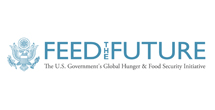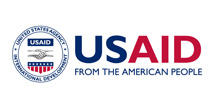Economic value of milk in Somali Region
Project title: Economic Value of Milk: findings from Jarrar and Shebelle Zones, Somali Region, Ethiopia
Lead researcher: Kedir Jemal, Jigjiga University
Collaborators
- Abdinasir Ahmed – Jigjiga University
- Habtamu Atlaw – Jigjiga University
- Nejib Abdi – Jigjiga University
- Hassen Mohammed – Jigjiga University
- Mohammed Ibrahim – Jigjiga University
Research report: download the research report jemal-et-al-tev-milk-report
Research summary
Pastoralism is a viable, vibrant and sustainable economic system which underpins the rural economy in East Africa. It accounts for a significant share of the informal and rural economy and contributes inputs critical to the formal economy, particularly milk and meat protein. Yet, its economic significance is typically understated, and its contribution undervalued. This poses challenges for decision-making, policy prioritisation, and attracting the investments necessary to ensure pastoralism persists. This study investigates the importance of pastoralism by examining the economic value of milk production, processing and trade in the Somali Regional State of Ethiopia through original research.
Milk is recognised as a critical mainstay of livelihoods in pastoralist society, both for household consumption and trade. We estimate the value of the milk economy within one region. This study investigates the importance of pastoralism by examining the economic value of milk production, processing and trade in the Somali Regional State of Ethiopia through original research. We survey 420 household heads involved with pastoralism to investigate the milk economy in Somali Region, Ethiopia. Milk sector is informal and hence does not have employment figures, especially since most are within the pastoral household (particularly milking), but we estimate over 750,000 labour full-time equivalents are invested in the milk sector in Somali Region each year. Milk is 96% female dominated so diversifies the revenue generating roles in rural areas and can rightly claim to offer empowerment opportunities to women.
The current estimated annual value of milk production by pastoral communities in Somali Region is an estimated 13.3 billion Birr/ $632 million USD (per pastoral household, 22,166 Birr/ 1,055 USD). Across the region, there are 3.9 million pastoralists in Somali Region in over 600,000 households, managing herds totaling almost 23 million head of livestock (8.4 million TLU). This study reveals that the production and consumption of milk by pastoralist households for local communities is a key rural livelihood strategy in Somali Region; but it has untapped potential and suffers from systemic issues that limit the economic value generation owing to geography, transportation, scale economics of the local supply chain participants, and access to markets, technology and information.


